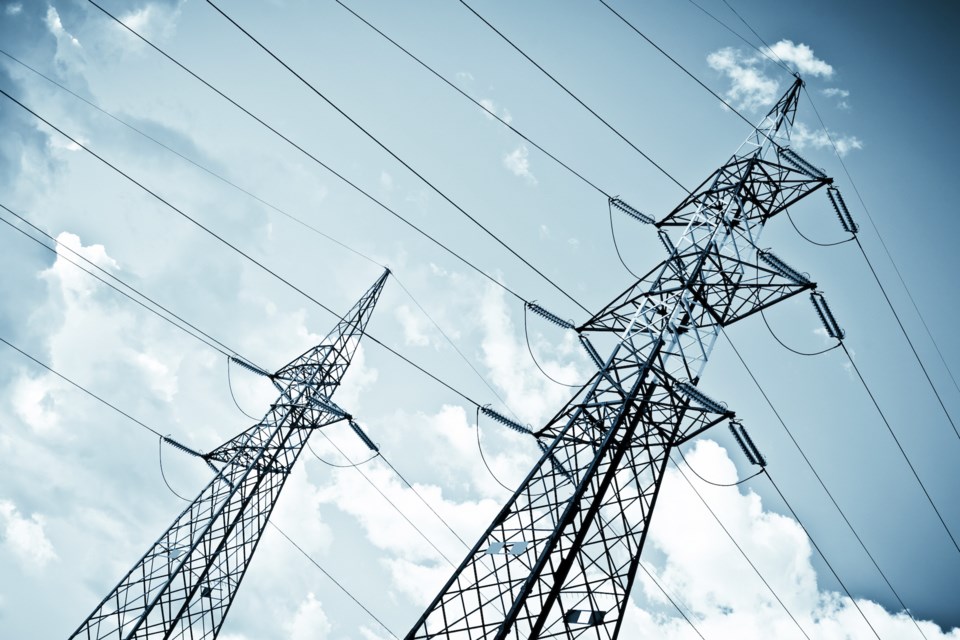Four First Nations have partnered to try and help make Ontario a little brighter.
Taykwa Tagamou Nation, Michipicoten First Nation, Chapleau Cree First Nation and Missanabie Cree First Nation have created the Transmission Infrastructure Partnerships 9 (TIP-9 coalition). They've partnered with Ameren Electric in hopes of building the Wawa to Porcupine Transmission Line in Northern Ontario.
The line is one of the recommendations in a recent report from the Independent Electricity System Operator (IESO). The 260-kilometre transmission line would run from the Wawa Transformer Station south of the township through the traditional territory of the four First Nations to the Porcupine Transformer Station in the Timmins area.
“What comes out of a project such as this is being able to build capacity within the communities and being able to participate in a project like this,” said Chief Bruce Archibald from Taykwa Tagamou Nation. “It's the financial benefits that are going to help the First Nation communities.”
Funding for community building and social services could be improved through this project, said Archibald.
“The underfunding that we get from the government today — when it comes to health, social, recreation, education, where a lot of our communities lack the proper funding that we need to provide these services,’ he said. “Those are the kinds of things that will come out of a project like this.”
Chapleau Cree First Nation Chief Keeter Corston said this bid shows how communities can work together to see their needs met.
“I talk a lot about truth and reconciliation in Ontario and I think they are leaning toward that more and more,” he said. “We have come to a good agreement amongst ourselves and strength in numbers always counts.”
Working together, he said, gives a voice to the issues the communities face in projects like this one.
“The government truly recognized that the old days of limited or meaningless consultation are over,” said Corston. “When we’re leaning toward somebody, they should take that into consideration.”
The Ministry of Energy's Environmental Registry of Ontario (ERO) commenting period for three other suggestions in the IESO report recently closed. There will be a separate commenting period for the Wawa to Porcupine line, which the ministry anticipates this fall.
"Taking additional time to contemplate prioritization and transmitter designation for the Wawa to Porcupine Line is possible as the recommended in-service date specified by the IESO is 2030, a year later than the other three lines," reads the ERO proposal from the Ministry of Energy.
Archibald said that the First Nations inclusion in the project could smooth the process of getting things off the ground.
“There are probably hundreds of jobs that are going to be created through this project and all the First Nations involved are able to participate in those jobs,” he said. “First Nations are a key component to any major project, and it makes it a little smoother to have First Nation communities involved from the beginning, not at the eleventh hour when everything is done already.”
Chief Patricia Tangie of Michipicoten First Nation, who has been involved in similar projects before, said that there has been a shift in how the government approaches work with First Nations.
“We are experiencing changes to the provincial government’s approach to things, certainly, and there’s a long way to go,” she said. “There is a dramatic change in the way government does business and the way they see First Nations as being partners rather than people they needed to marginalize.”
There is a responsibility to make sure these projects are sustainable, said Tangie.
“As individuals and a collective people, we have to ensure that our responsibilities in looking after the environment are cared for in a good way,” she said.
“This gives a chance for Ontario or the federal government to think outside the box,” said Archibald. “We’re here to bring value to these projects.”
Corston said that this is a chance for the government to put their money where their mouth is.
“It’s a brand new day,” said Corston. “They talk about a new relationship, well, let’s do it, talk is cheap.”
The IESO report says its recommendations would improve reliability for existing and future loads in the Timmins area, and increase power transfer capability from Sudbury to supply future loads in the Sault Ste. Marie focus area and northwest regions.
